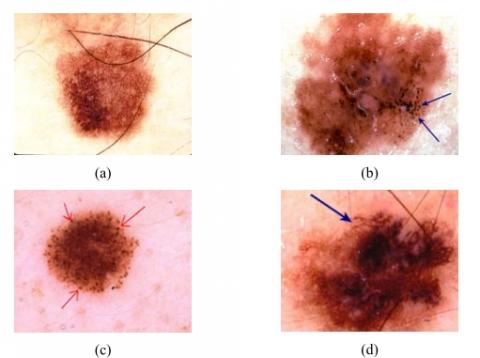Image - based diagnosis of malignant melanoma
| 7 of 13 | << First | < Previous | Next > | Last >> | Back to gallery |
A major issue concerning the design and implementation of an image acquisition system for skin lesions is its ability to capture reproducible images. The reproducibility is considered essential for image analysis and for the comparison of sequential images during follow-up studies. This paper describes a prototype image acquisition system that includes a standardized illumination and capturing geometry with polarizing filters and a series of software corrections: Calibration to Black, White and Color for color constancy, Internal camera Parameters adjustment and Pose extraction for stereo vision, Shading correction and Noise Filtering for color quality. The validity of the calibration procedure and the images’ reproducibility were tested by capturing sample images in three different lighting conditions: dark, medium and intense lighting. For each case the average values of the three color planes RGB and their standard deviations were calculated; the measured error differences ranged between 0.7 and 12.9 (in the 0–255 scale). Preliminary experiments for stereo measurements provided repeatability of about 0.3 mm. The above results demonstrate the reproducibility of the captured images at a satisfactory level. The developed prototype was also evaluated clinically, for its ability to support the construction of knowledge-based decision systems and for telemedicine, thus to support telemedical sessions in dermatology.



